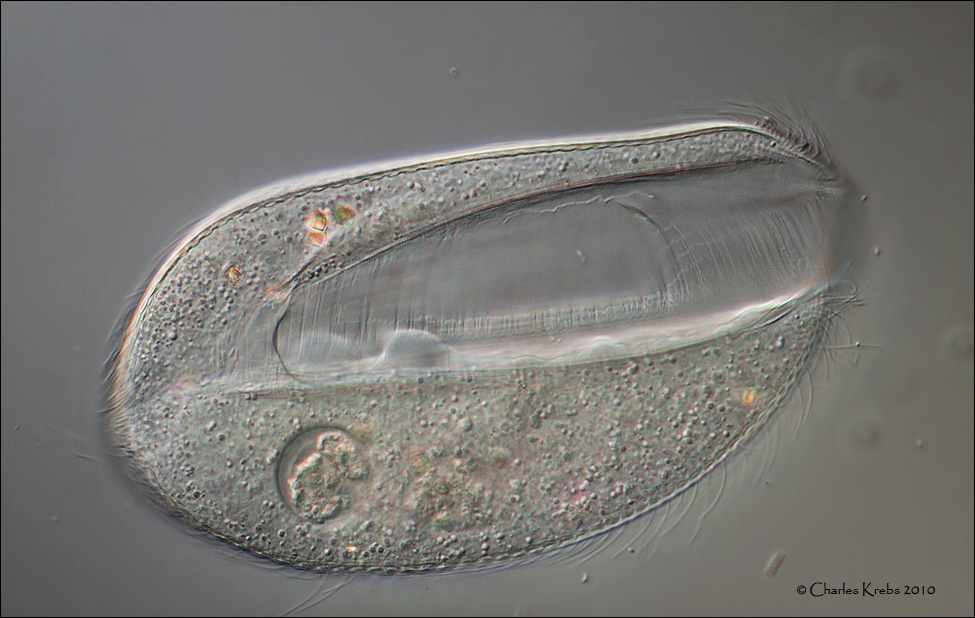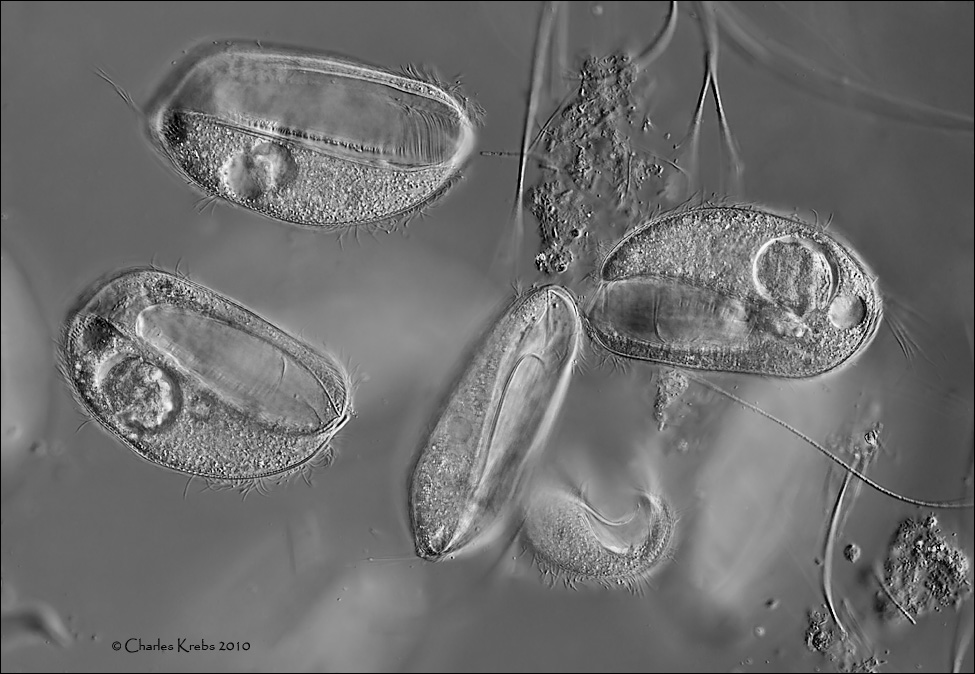Mitch,
It varies. I generally like to look at freshly collected samples, but obviously this time of year that can be less productive in some locales. I have on occasion kept a small aquarium going, but generally it's a few large jars or a couple of those flat, square inexpensive food storage containers holding samples. Keep a good amount of surface area. I keep them on a window sill that gets good light but
not direct sun (not that that's a huge problem this time of year where I live.

). Keep the water level up with distilled water or bottled "spring" water that has no added ingredients. (If you need to use tap water let it sit out a day or two first).
Samples taken in winter (even from under ice) will contain some active subjects. And it's very common that after sitting on the window sill for a few days they come to life with all sorts of new critters. Be sure to collect a bit of bottom "mud" and some organic material (old grasses, leaves and such). Be sure to collect some of the debris that is floating on the surface. You can even spur things on by dropping in a few rice grains (or other grains... I've even tried some dog biscuit crumbs and bit of chocolate chip cookies

... just about anything that will provide a nutritional source to promote the growth of the bacteria which is the base food source for these samples).
Some people really like to carefully start and maintain protozoan "cultures", and there's a good amount of information on the internet about doing so. Also don't forget to look over the offerings at places like Carolina Biological Supply, and Wards Natural Science (search "protozoa" on their sites).



